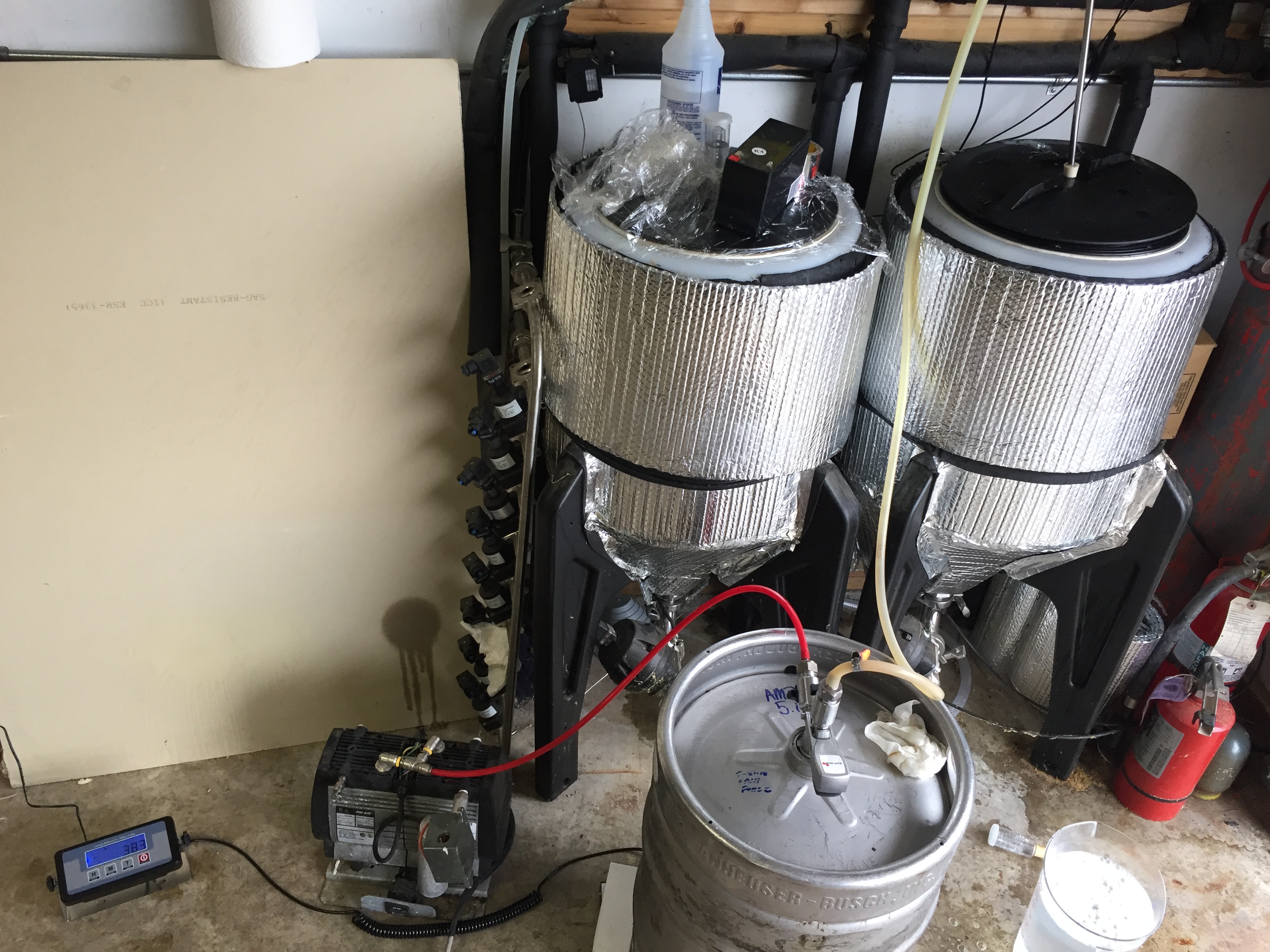I just bought a vacuum pump for a project I'm working on.
I'm wondering if anyone has tried evacuating the air out of a keg and then using the keg vacuum and maybe some additional pump vacuum to suction beer from the fermentor into the keg.
It would save a lot of CO2 compared to filling a keg with sanitizing solution, then pushing that out with CO2.
It would also allow pressurized flow from the fermentor to the keg without having a pressure rated fermentor.
Foaming might be a problem once the initial beer got into the keg due to the low pressure ? But fermented beer should be very low in CO2, so no foaming should occur.
Thoughts ?
I'm wondering if anyone has tried evacuating the air out of a keg and then using the keg vacuum and maybe some additional pump vacuum to suction beer from the fermentor into the keg.
It would save a lot of CO2 compared to filling a keg with sanitizing solution, then pushing that out with CO2.
It would also allow pressurized flow from the fermentor to the keg without having a pressure rated fermentor.
Foaming might be a problem once the initial beer got into the keg due to the low pressure ? But fermented beer should be very low in CO2, so no foaming should occur.
Thoughts ?




![Craft A Brew - Safale BE-256 Yeast - Fermentis - Belgian Ale Dry Yeast - For Belgian & Strong Ales - Ingredients for Home Brewing - Beer Making Supplies - [3 Pack]](https://m.media-amazon.com/images/I/51bcKEwQmWL._SL500_.jpg)



































